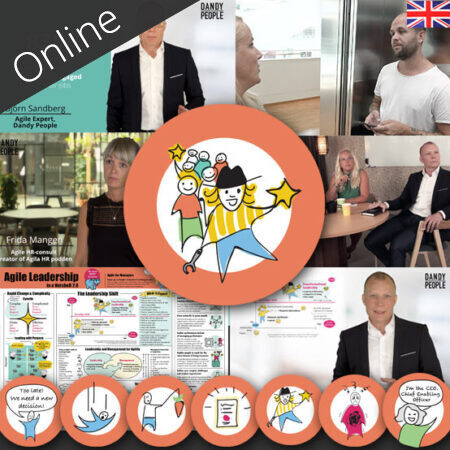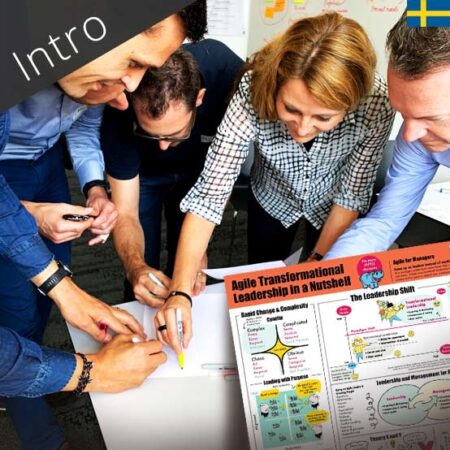Why we do things is the underlying foundation of our motivation and development. And when you work in an organization and in a team you need to feel that the organization’s and team’s purpose, vision, values, and mission is connected to your own foundation. “My leadership canvas” is a way to see if this is aligned and act as guidance in your personal development.

WHY statement
To resonate further with your purpose in everything you do you can start by formulating your own WHY statement. The method is from Simon Sinek’s book “Start with why” where you can get deeper into the significance of starting with why.
To find your WHY statement you can follow these guidelines:
- Simple and clear
- Only one sentence
- Languages that resonate with you
- Resonate both with work- and private life
- Write several until you find the right one
As an example, my WHY statement is: “I empower myself and the people around me so we can become the best people that we can be”.
Strengths
To be able to know your strengths you need to know yourself. And one way of doing that is really asking for opinions from other people around you what your strengths are.
This is an empowering exercise you can use:
- Meet in small groups, in your team or workgroup.
- Take as many papers as you are people and write your name on top of the blank paper and send it to the right.
- Send the papers around until everyone, including yourself, have filled in what strengths you see in that person.
- When you get your paper back you can choose to resonate with everything that is on the paper or parts of it. Make sure to ask questions if you don’t understand and go around so each person has time to reflect and understand the strengths.
- Write down the strengths that resonate with the beliefs of your strengths on the canvas
Capabilities
What capabilities you have can be recognized by your education, experiences, and learnings. But it can also be non-cognitive capabilities like empathy, leadership, creativity, analytical and problem-solving. The capabilities should not be evaluated there should simply be a recognition that you have the capability to do something. Everyone has the capability to learn something, with the right mindset.
Some get stuck in arguments “I already know this!” or think “I am the best at this”. While others may not even listen or try, thinking “I know I suck at this”. The ones who are open to new challenges and know that everyone can get better if they practice choose to take the stairs approach, one step at a time. They take on new challenges and fight to learn a new capability. They also help and support others in the process. And, most importantly, they learn from their mistakes.
Exercise to try meditation could be this:
- Set the alarm clock to 2 minutes.
- Sit comfortably and relaxed but have a straight back and your hands on your legs.
- Close your eyes
- Listen to the sounds you hear, your breathing, the ventilation, traffic outside, nature.
- Sit like this until the alarm goes off.
- Congratulations you have completed 2 minutes of meditation.
I want to learn
What you want to learn comes from your own motivation. What are you interested in at the moment? What is most important to you? You can do this by listening inward, by turning off all impressions and expectations from the outside world. To ignore the template that society is trying to put us all in and listen to yourself. Meditation is one way to listen inward but I believe that when you do something that you love, whether it is meditating, yoga, riding or running, that it is your opportunity to hear your inner voice. The one who says what you really like and value. The key is to listen and above all to trust what that voice is saying. Trust yourself, you know best what is right for you.
Stress signals
When we focus on dealing with different types of threats the body’s stress system is activated. The pulse increases, we get hyper-focused on the threat and don’t see things around us as clearly. The consequence of that is that it becomes harder to see and take in other people’s perspectives, our empathy drops and it leads to reduced ability to cooperate. We are more likely to end up in conflicts and we become generally more aggressive. That’s why it is so important to know when your stress system is activated. Then you can make conscious choices to back out from those situations and find a more calm environment and/or situation to make better choices and more conscious actions.
Exercise to find your stress signals in order to be aware of insecurity and stress.
- Draw a whole-body figure that represents yourself.
- What happens to your body and brain when you feel stressed?
- Illustrate around the body figure what happens to you
- Write down the stress signals that are most clear to you in your canvas
Goals
To set goals there are only two things you need.
What it is you want to achieve and how do you know when you have achieved it?
When we work agile we break down goals into smaller activities and work in iteration (time-boxed sprints) to be able to re-prioritize when starting a new iteration, find new activities that lead to our goal and to see progress. It will be easier to understand what effort is needed to achieve the goal if you see what activities need to be done to get there. An important tool here is visualization. Visualization helps with several things. You get an overview of progress but research also shows that visualization initiates a process in the brain to interpret what we see and draw conclusions about how we should act or react, creating effects that bridge barriers, simplify and clarify and creates change power.
When you complete a task and move it to “done”, the reward system is activated and the body releases dopamine. Which feels good. It is therefore important to get a small sense of it, perhaps daily, to see that you are moving towards your goal.
Having measurable goals gives you room for reflection on what you have done that has moved you closer to your goal and what you have done that may not have had any effect. A reflection can be done daily, weekly or maybe monthly and should include both reflections on WHAT done but also HOW it is performed.
To retain a sustainable life balance having your own personal leadership is important. Not only will it give you greater meaning to what you do and move your forward it will also make you more focused, more present and happier.
Isabelle Svärd, Agile Coach



